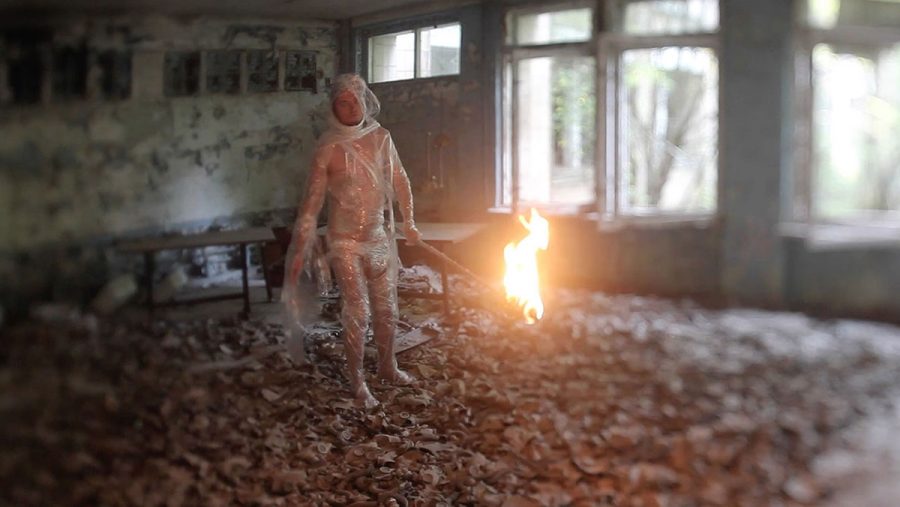‘The Russian Woodpecker’ in review
Documentary delves into the mystery of the Chernobyl disaster and the enigma of the Russian woodpecker
Photo by SUBMITTED
A still from the film shows Fedor Alexandrovich standing in an abandoned classroom littered with gas masks.
September 20, 2016
A blank, black screen and a rapid, helicopter cadance. But first, a disclaimer: “The authors of this film in no way intend to injure relations between Ukraine, Belarus and Russia.”
Fedor Alexandrovich, a Ukrainian artist and victim of the Chernobyl nuclear disaster, decided to investigate the catastrophe and stumbled upon a dark secret. Burdened by the information, the desire to share these clandestine findings and the need to protect his family from the KGB, Alexandrovich had to decide whether to keep the information to himself or play his part in the Ukrainian revolution.
“The Russian Woodpecker” began with Alexandrovich visiting the decrepit wreckage of the town of Chernobyl after becoming entranced by the secrets surrounding the catastrophe. As the film progressed, Alexandrovich became convinced that the Chernobyl disaster was purposely planned and carried out by a high-ranking Russian official to cover up an expensive blunder and save his reputation.
This blunder was known as the Duga radar, the machine that broadcasted the signal of the disruptive Russian Woodpecker that was supposedly designed by the Soviets during the Cold War as a weapon meant to disrupt communications. From its activation in 1976, the Duga radar caused chaos in Western communications, even prompting some more paranoid Americans to speculate about the possibility of “mind control.”
The weather phenomenon that caused the Duga radar to fail was almost as ludicrous as the notion of mind control. The Northern Lights over the United States served as a protective canopy, blocking the Duga radar and rendering it useless. With this expensive project now essentially worthless and with an impending evaluation of the project, Alexandrovich claimed the Minister of Communications Vasily Shamshin called the order for the destruction of the nuclear reactor. The reactor was close enough to the Duga that the meltdown would cover up the failed project and save Shamshin’s reputation.
Taking into consideration that 985,000 lives that have reportedly been claimed by the Chernobyl nuclear disaster, this accusation isn’t to be taken lightly.
Although the documentary is compelling with its testimonies and theatricality, many of the scenes take on a more staged quality. The emotional and heartfelt monologues don’t seem genuine and the creative symbolism and theatrics in general put into question the authenticity of the documentary.
Whatever doubts I have on the truthfulness of the theory does not negate the enjoyability of the documentary. The storytelling was remarkable and held me captive for the entire film. It was artfully produced and incredibly done, deserving of the World Cinema Documentary Grand Jury Prize it won at the 2015 Sundance Film Festival.
Experience the conspiracy theory for yourself in Woodland Theater. The documentary will air at 7 p.m. Friday, 2 and 7 p.m. Saturday and 2 p.m. Sunday.

